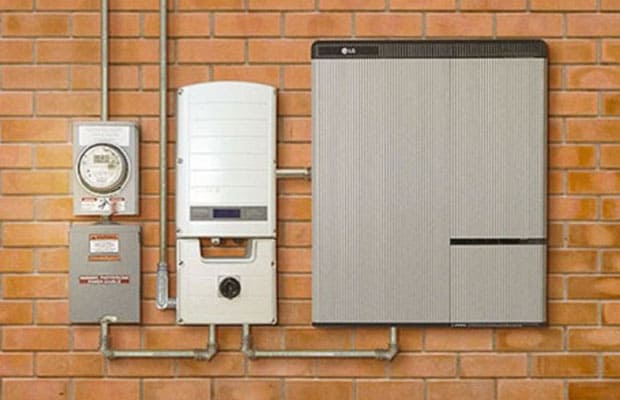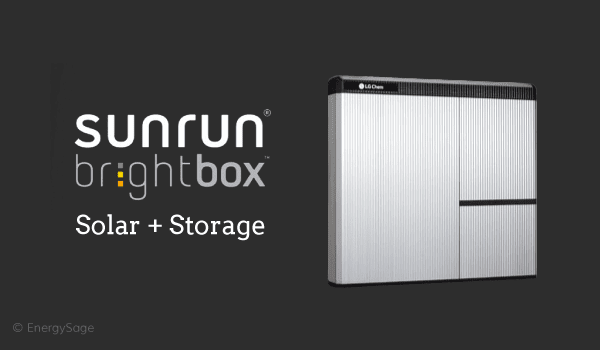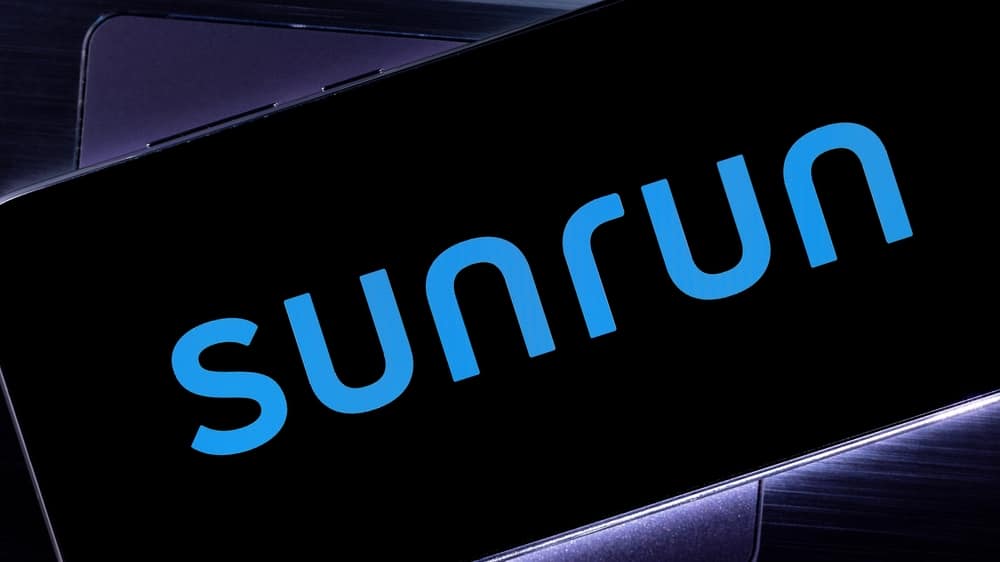Are you thinking of converting to solar power? While rooftop panels are an important consideration, so are solar batteries.
Solar batteries are a significant investment. These fixtures are an integral part of a solar energy system, especially for homeowners who want to store their generated solar power for later use.
In this article, we will talk about how much a Sunrun battery costs, brand models, features, and more.
Table of Contents
How Much Does a Full Sunrun Solar System Cost?
Sunrun aims to provide homeowners with affordable solar batteries in addition to solar panels. But just like most other solar providers, they don’t disclose much pricing information upfront. There are a lot of variables that can influence the price, so it would be best to contact Sunrun and check if you qualify to enter a lease or power purchase agreement. For its leasing arrangement, Sunrun advertises an initial cost of $1,000 more or less.
After a brief look at the price, let’s take a look at more information about Sunrun batteries.
Sunrun Overview
Sunrun is a major player in solar power markets in America. Most of its business focuses on power purchase agreements and leases, and the company provides strong warranties for these. In fact, the majority of its customers lease solar panels for a monthly fee. The way Sunrun conducts its business is what makes it a unique company.
If you are going to purchase solar panels from Sunrun, you will receive nothing but top-of-the-line panels manufactured by established companies with long-standing reputations of quality. Sunrun also offers competitive battery options with Tesla’s Powerwall 2 and LG’s Chem RESU-10H batteries.
What is Sunrun Brightbox and How Does It Work?
Sunrun Brightbox is the company’s proprietary battery management solution launched in partnership with Tesla and LG. This program aims to help homeowners maximize their solar savings and save money on skyrocketing electric bills by satisfying their electricity demand by themselves.
As solar panels harvest energy from the sun, Brightbox allows you to store and convert that energy so that you can use it in the evening and avoid peak pricing, or when there is a low-voltage situation or a blackout. By connecting the Brightbox router to your device, you can monitor your battery’s storage and energy usage.
With the ever-increasing instances of power outages, solar batteries are becoming a mainstay, especially for residents in outage-prone areas. There is simply no price too high for the peace of mind and benefits of being able to generate backup power during extended blackouts.
What Solar Batteries Does Sunrun Use for Brightbox?
Through Brightbox, Sunrun offers its solar-as-service patrons two Lithium-ion battery storage options: Tesla Powerwall 2 and LG Chem RESU-10H.
Starting at $12,000, the Tesla Powerwall 2 is definitely pricey, but it is currently the best AC battery system. It boasts a large 13.5kWh storage capacity and 7kW peak power rating, making it suitable for most large modern homes. And so far, this powerhouse is also the only solar battery to incorporate liquid cooling.
The Powerwall 2 is about 6 inches deep, 2.5 feet wide, and 4 feet tall. Its compact design makes it fit most spaces indoors or outdoors. Your installers won’t have a difficult time installing this unit and you can retrofit this AC system to any house with an existing grid-tied solar panel installation.
The smaller LG Chem RESU-10H is also one of the most robust solar batteries you will find, and its price point ranges between $9,000-$11,000. Consumer reviews have touted it to be a high-quality, reliable solar battery. It offers a usable capacity of 90% and LG claims it has a battery life of 4, 000 cycles. However, LG only offers a 60% energy retention guarantee over the battery’s lifespan.
Why Do You Need a Solar Battery Bank?

When you decide to go solar, you will need an array of solar panels installed on your roof to collect energy from the sun and convert it into an electric current. This direct current goes through an inverter and gets converted into an alternating current that we can use in our home appliances.
Since most residential solar panel systems are tied to the local power grid system, any excess energy produced by the solar panels will be sent back to the utility grid. So, where do solar batteries come into play?
When solar panels are paired with a solar battery, the battery stores the excess energy for later use rather than sending it back to the grid. And so when the sun goes down or your panels aren’t producing much energy for days due to inclement weather, you can tap into those energy reserves. The more solar energy your batteries can store, the less energy you will have to purchase from your utility company.
Do You Need Sunrun to Install Solar Batteries?
You cannot buy a solar battery from a retailer and install it yourself at home. Some solar batteries, such as the Tesla Powerwall 2 and LG Chem can only be purchased and installed by a certified company like Sunrun. Take note that solar batteries are add-ons to a solar panel installation.
How to Choose the Best Solar Battery
To get the most out of your solar system, you also need a solar battery with your top-tier solar panels.
Battery Capacity
Everyone has different requirements, so you should choose the right solar battery with the capacity for your specific needs. Higher capacities mean there is a greater chance your battery will deliver uninterrupted power to your home, which is crucial to persist through power outages that can last for days due to a storm.
Tesla’s Powerwall 2 has a storage capacity of 13.5 kWh, which is by far the highest solar battery capacity on the market to date. But if this isn’t enough for your needs, you can stack up to 10 of these batteries to increase the power storage up to 135 kWh. LG Chem, on the other hand, comes in 5 different storage capacities that range between 2.9 kWh to 9.8 kWh.
To put it simply, Tesla Powerwall is ideal for whole-home backup, while LG Chem is more suitable for “just the essentials.”

Power rating
In addition to the battery capacity, you will also want to take a look at the peak power rating and continuous power rating. Peak power refers to the maximum amount of power it can sustain at any one time, while continuous power is the amount of power that can be produced for a prolonged period of time.
Between the two, we find the latter to be a more important figure. However, there is nothing to worry about here since both have a peak rating of 7 kWh and a continuous power rating of 5 kWh.
Batteries with high power ratings are ideal for residential use, as they supply sufficient power for lighting and small electronics as well as major appliances and heating equipment.
Price and Warranty
The upfront costs are, of course, a significant factor to consider when you invest in a solar energy system. Solar batteries are expensive. For just one piece of equipment, you’ll have to pay a few thousand dollars and the price reflects the battery alone.
But when you purchase a solar battery, you will want to focus on the value it offers in the long term. Paying less for a less powerful solar battery may not be the most practical option in the long run.
Likewise, the warranty is also worth considering, as it can affect the overall value of the unit. On the bright side, Tesla Powerwall 2 and LG Chem RESU-10H both come with a 10-year warranty, which is the industry standard.
Weatherproofing
The Tesla Powerwall 2 is fully waterproof, which makes it suitable for outdoor installations. LG Chem, on the other hand, has an IP55 water-resistance rating.
Another reason that justifies Tesla’s Powerwall 2 hefty price tag is its built-in temperature moderation, which helps extend the battery life. Extreme temperature drops cause solar batteries to fail prematurely.
Conclusion
The bottom line is that you need a reliable solar battery in addition to solar panels to make sure you get the most out of your solar system. Sunrun offers two options: the Tesla Powerwall 2 and LG Chem RESU-10H.
Tesla’s Powerwall 2 is the most scalable residential and small commercial solar battery on the market. Since it is an AC couple battery system, you can add it to an existing grid-tied solar energy system. And in case your energy demands increase, you can stack up to 10 of these batteries. It isn’t cheap, but it has set the bar high.
On the other hand, the LG Chem offers an array of storage options to suit homes of varying sizes and energy requirements. Since it is a DC couple, it can only be installed with a new grid-tied solar energy system. Another drawback is that it provides less efficiency in terms of power conversion. But if your home is smaller, the LG Chem battery might suffice for your needs.
